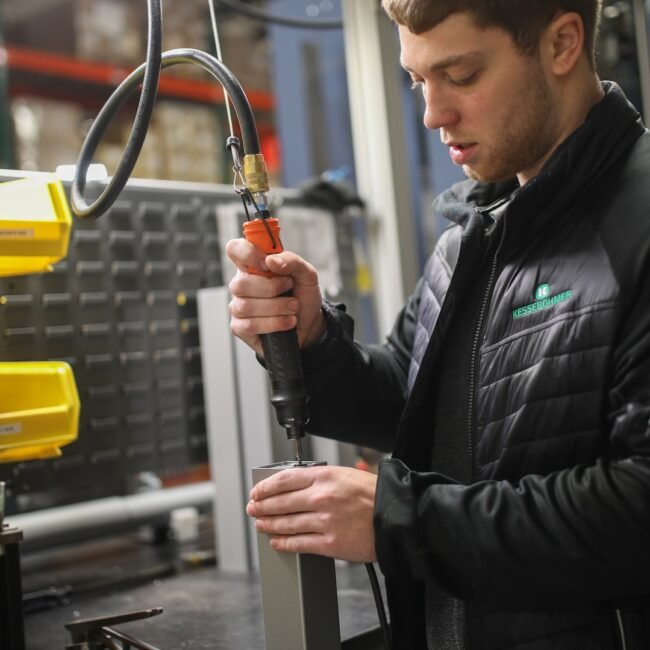Customer
Invention Machine [USA] is the leading provider of software that speeds the process of innovation. For more than a decade, Invention Machine has helped over 1,000 companies worldwide, to drive top-line growth, reduce costs, and speed up time-to-market by improving process efficiencies and more rapidly fueling their product pipelines with higher-quality products.
Challenge
Invention Machine Corporation aims at providing big companies with a tool that allows improving their innovation process using semantic analysis for document management in the heterogeneous knowledge base collected by the client. The developed system functions as a service that scans client’s documents and creates semantic index, which will be further used for solutions search using Subject Action Object pattern and Boolean queries. It is the syntax part that will ensure product success in the competitive search market. As an addition, the service allows searching for new knowledge in some particular domain by means of notification about new results for the specific period.
Web portal serves as the environment the client can work in. The client can make use of semantic search within the registered scientific effects, patents and other widely used web services. The client can also index the documents on his own computer by means of a special IE plug-in. This plug-in allows simultaneous search not only on the client’s computer, but also in the patents database on a special server.
Solution
Goldfire Innovator is a combination of several products developed by Invention Machine during several years. Therefore, Goldfire Innovator includes many modules developed from the already existing solutions that were updated according to the market requirements.
Analysis & planning phase
The basic product to be modified was CoBrain web portal that allows search but without semantic analysis. Marketing department in Boston conducted research and analysis to determine what new features and tools the new service should have.
The list of features was sent to technical specialists who created a preliminary project plan with preliminary schedules and the list of deliverables. The project turned out to consist of two parts – semantic search service and user portal. The project was realized by the data science team in Europe (server, GUI and QA teams were set up), management and marketing was conducted in USA. ScienceSoft’s QA specialists set up a customized development process compatible with ISO 9001.
Design phase
Development team started to define the customer’s requirements. A detailed project plan was created with a thorough risk analysis to minimize their possible impact. GUI team created vision documents, interface templates, etc. After approval of the templates by the Invention Machine management a detailed plan for GUI creation was elaborated. A set of deliverables was defined:
- At the first stage, newly implemented and updated CoBrain features had to be delivered.
- At the second stage semantic search features were to be integrated.
- At the third stage plug-in functionality for the client machine had to be realized.
Implementation phase
During the implementation phase, the Service and GUI teams worked in close cooperation to determine input and output data format. As a result, service and GUI part were developed in parallel. Service team provided special patches for the GUI team and GUI team always had the required functionality to prepare user interface for it.
GUI features were also developed in parallel. Moreover, the GUI team used CFML-Custom-Tag widely. This allowed the team to create a web component library that allowed to significantly minimize UI development and testing time.
Source codes of both GUI modules and Service modules were stored in centralized SourceSafe base and were available to all specialists participating in the development process. Therefore, not only storage procedure but also accounting of efforts to implement specific features was carried out.
All project modules passed through the phase of preliminary testing. Unit tests were created for the Service modules, and for GUI models, in its turn, particular System tags were tested in accordance with the described interface.
All the tasks performed by developers were registered in the defect tracking system – TrackGear. Each developer provided a report on the performed work and specified the changed codes. After Service and GUI components of each particular feature were ready, the feature was marked as implemented and ready for integration.
Integration phase
After some feature was ready for testing it was integrated into web portal.
Stabilization phase
Testing was performed the next day after a feature was integrated into the portal. QA group tested the feature and registered bugs in Track Gear. The defect was discussed with developers and the code was fixed. If any new requests appeared they could be registered in the bug tracking system as change requests. After all defects were fixed, the feature was considered to be implemented.
Beta versions of the product were step by step uploaded to Invention Machine’s website. The Customer’s employees and CoBrain users performed beta testing. And after implementing change requests, the product was ready for public use.
Deployment phase
The final version of the product became available at Invention Machine’s website. The product functionality was thoroughly documented. Each module had its detailed description. That allowed the team to easily proceed to support stage. The final version was uploaded to IM website for public use. The users provided their feedback in the system and submitted change requests that were implemented in further product versions.
Maintenance & support phase
When the warranty period expired, the Customer and ScienceSoft signed the Service Level Agreement that specified Maintenance & Support implementation. Work on the project was divided into 2 parallel processes:
- Defects reporting, tracking, fixing; minor change requests implementation (Support).
- Major change requests accumulation, planning and implementation (Maintenance).
Results
Goldfire Innovator allows a structured approach to inventive problem-solving. It helps users to easily identify the problem, generate solution and solve the problem with the highest efficiency.
Goldfire Innovator delivers crucial patent and scientific content – including access to:
- 15 million worldwide patents,
- Database of 8000 scientific effects, 3
- 3000 cross-disciplinary scientific ‘deep web’ websites
The combination of inventive software and rich content enables organizations to bring greater efficiency to their innovation and problem solving processes by empowering engineers with methodologies, disciplines and relevant knowledge.
The developed solution:
- Ensures better problem definition and understanding;
- Automates and facilitates the processes around concept creation;
- Enables detailed value analysis of existing physical devices and production processes;
- Defines and prioritizes engineering problems and solutions;
- Facilitates capturing and sharing of corporate and personal knowledge by eliminating reinvention and promoting engineering reuse;
- Facilitates competitive analysis, patent analysis and technology trend analysis;
- Infuses better market knowledge earlier in the product development process.
Whether conceiving new products, correcting product defects, designing feature modifications to existing products, identifying technology trends and future product roadmaps, or improving production processes, Goldfire Innovator enhances and accelerates the ability of engineering, marketing and production personnel to methodically explore and validate more cost-effective, competitive, and higher-quality system designs.
Companies using Goldfire Innovator benefit from:
- Improved quality and rate of idea generation;
- Greater conversion rates of ideas to products;
- Better and more competitive product offerings;
- Streamlined manufacturing processes;
- Faster time-to-market;
- Greater R&D return on investment;
- Accelerated corporate growth.





